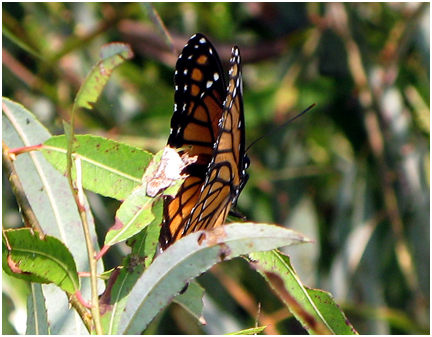
Monarchs flutter along the Choctawhatchee River
Even though the temperatures have not indicated any sign of fall, Mother Nature is. This monarch was spotted on a willow tree along the Choctawhatchee River on Sept. 19. A bit of an early migrate, its appearance indicates that fall is nigh.
Unlike most other insects in temperate climates, monarch butterflies cannot survive a long cold winter. Instead, they spend the winter in roosting spots. Monarchs east of the Rocky Mountains fly farther south to the forests high in the mountains of Mexico. The monarch’s migration is driven by seasonal changes. Day length and temperature changes influence the movement of the monarch.
No other butterflies migrate like the monarchs of North America. They travel much farther than all other tropical butterflies, up to three thousand miles. They are the only butterflies to make such a long, two-way migration every year. Amazingly, they fly in masses to the same winter roosts, often to the exact same trees of their ancestors, making the round-trip only once. Their children’s grandchildren return south the following fall.
To learn more about monarchs and the national tagging program that tracks their journey, Click here
